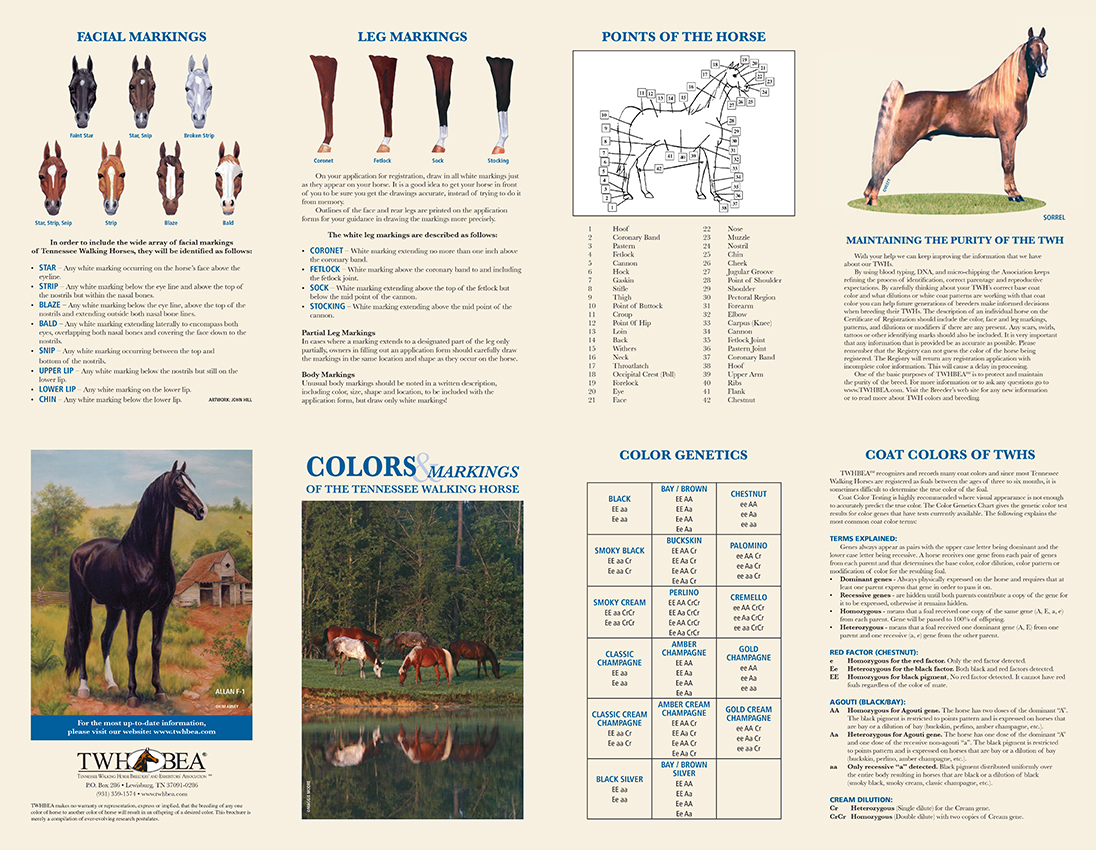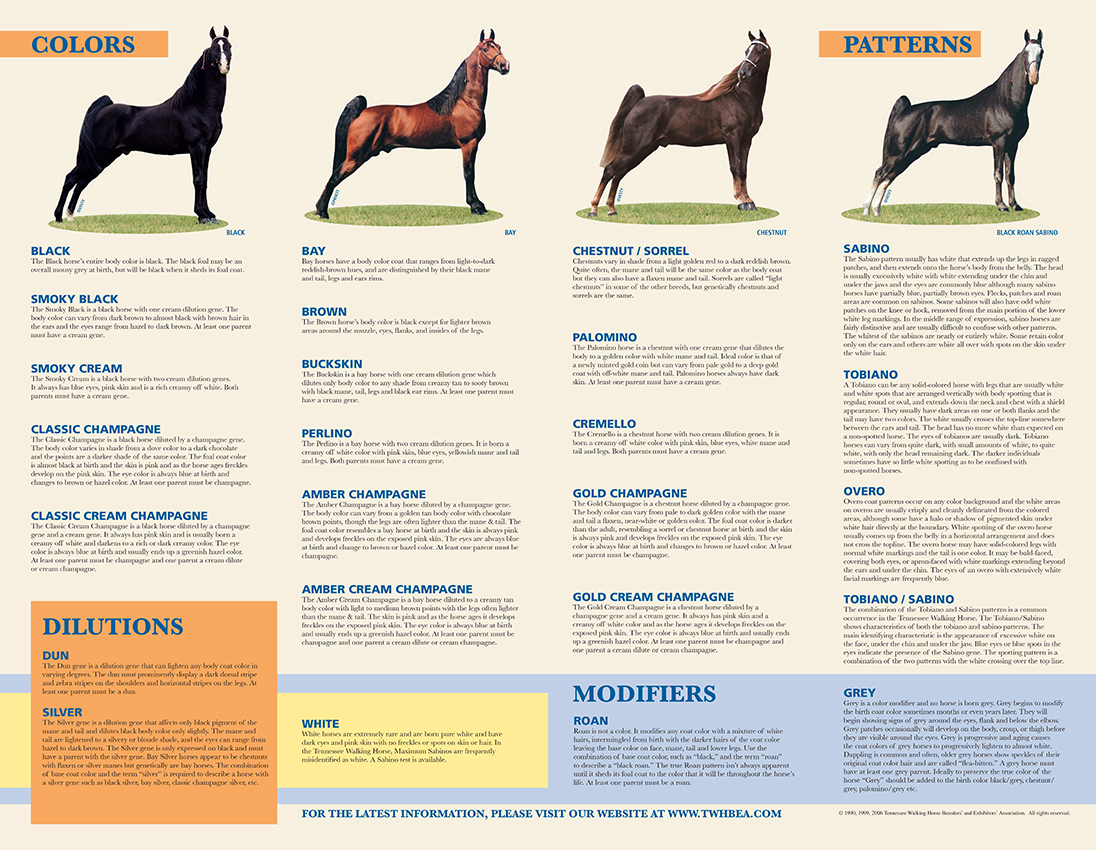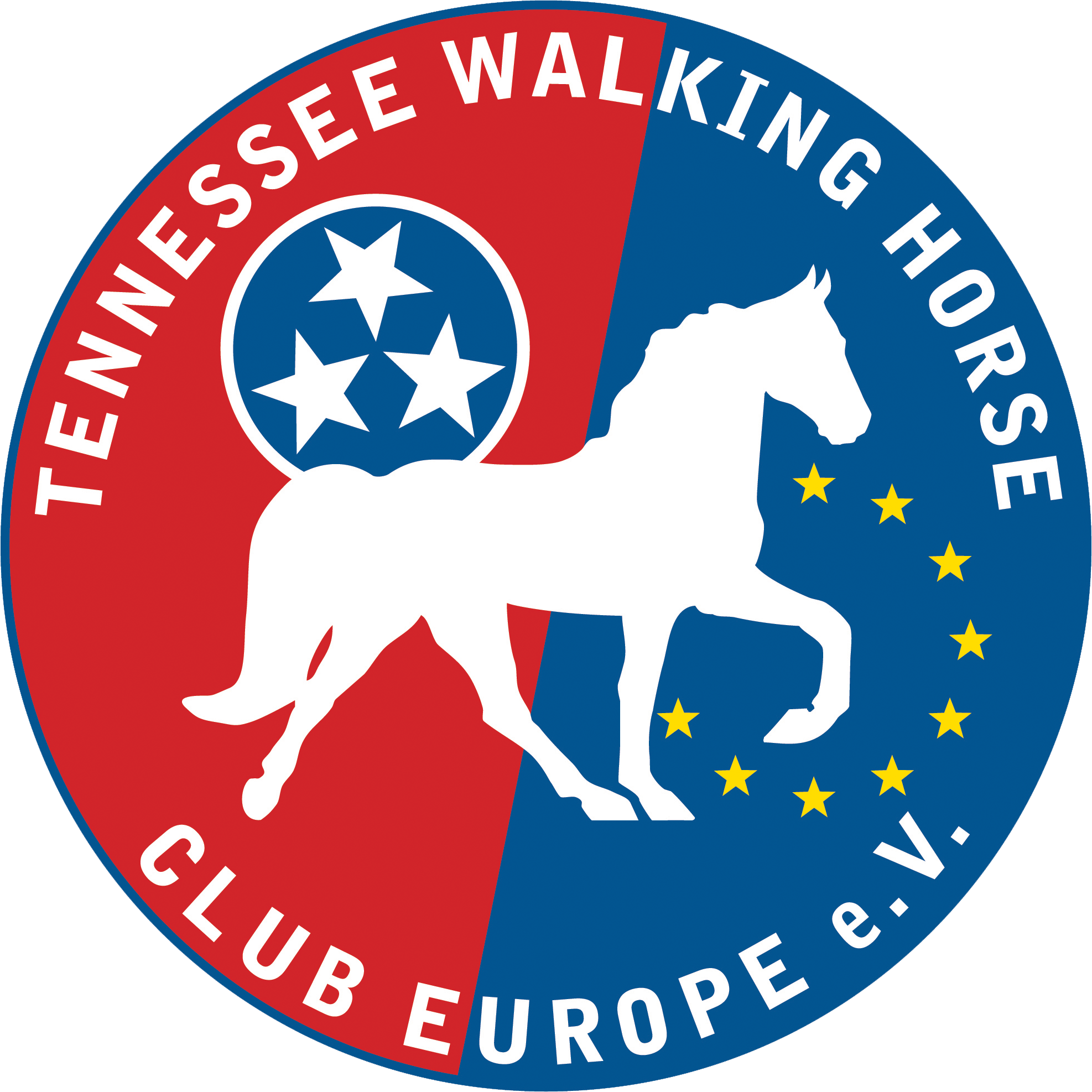
The Tennessee Walking Horse (TWH) is a light horse breed from the state of Tennessee, USA. It mixes Narragansett, Canadian Pacer, Standardbred, Thoroughbred, Morgan, and American Saddlebred, amongst other breeds. It originated as a utility horse for plantation operators in the southern states. It had to be suitable for plowing fields, carrying its rider comfortably across the plantations for days, and driving the family to church on Sundays. Speed was also critical, as these horses were often raced in running walk and gallop races for Saturday night entertainment.
The stallion “Black Allan,” born in 1886, is considered the founding stallion of the Tennessee Walking Horses. The breed’s stallion book was closed in 1947, and the breed was recognized officially in 1950. The TWH is versatile, and its calm, good-natured temperament, along with its natural, level, and flat gait, makes it suitable for riders of all ages and experience levels and ensures the popularity of the TWH as the “best competition, riding, and leisure horse in the world.”
It is a medium-sized horse, ranging from 140-170 centimeters.


The TWH has four different gaits: the walk, the flat walk, the running walk, and the canter. The TWH is famous for these last three gaits. The running walk, a naturally innate gait, is unique and only found in the Tennessee Walking Horse. Many TWH also master tölt (rack), stepping pace, foxtrot, single-foot, and other variations of the running walk. Although these gaits are not needed in competition, they are all soft and easy to ride for pleasure.
The flat walk is a brisk, ground-covering step at a speed of between four and eight miles (6.5-13 km) per hour. This four-beat gait has a reinforced step and active hindquarters reaching far below. The horse pushes the hind hoof over the hoof print of the front hoof: right hind hoof over the right front hoof, left hind hoof over the left front hoof. The movement of the hind hoof sliding over the front hoof is known as an “overstride.” The ankle joint should only show forward movement; vertical movement of the ankle is highly undesirable. A TWH nods his head in rhythm with the gliding step. Head-shaking and overstriding are both evaluation criteria unique to the breed.
The running walk is the gait that stands out most with Tennessee Walking Horses. This extra-soft gliding walk has the same rhythm and foot sequence as the flat walk but with more overstride and increased speed. When done correctly, the ankles accelerate when pushing off. Thus, the step is more expansive. Correct execution of the gait is more important than speed. In this gait, you can travel between ten and twenty miles (16 and 32 km/hour) per hour. At this acceleration, the horse steps over the imprint of the front hoof with the hind hooves six to eighteen inches (15 to 45 centimeters). This movement gives the rider the feeling of gliding through the air.
The third gait is the collected Canter (slow gallop). The horse should remain balanced and collected. The Canter should be ridden similarly to other breeds, but the Tennessee Walking Horse shows this gait in a remarkably relaxed manner. The Canter is a forward movement performed diagonally to the right or left. Example: when galloping on the right hand, the leg sequence is left hindquarters (bar 1), right hindquarters and left forehand (bar 2), right forehand (bar 3), then a suspension phase. The slightly flowing nod of the head, the rhythmic up and down movement of the head, with slight collection, leads to a gallop (Canter) with up and down movement like in a rocking chair. Hence, the name “rocking horse canter” is used. These gaits are shown at our competitions in various divisions depending on the horse’s potential.

